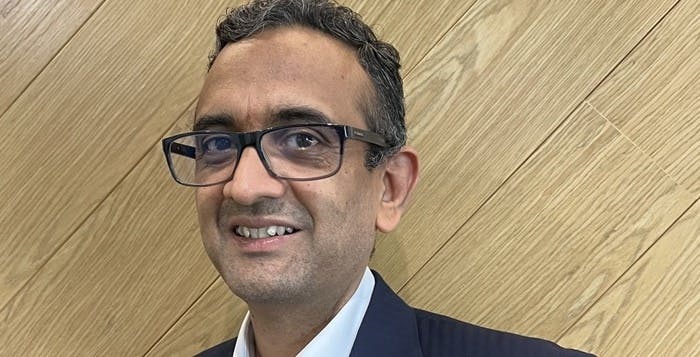The insurance industry is on the cusp of transformative changes driven by technological advancements and evolving customer expectations. The advent of insurtech startups, advancements in AI and the increasing use of big data analytics are reshaping traditional insurance models.
Generative AI (GenAI) is the current technology paradigm creating huge buzz across the insurance industry, as well as most other industries. In the recent past, blockchain technology was being explored for secure and transparent transactions, while the Internet of Things (IoT) is enhancing risk assessment and claims processing through real-time data collection from smart devices. These innovations are not just incremental. They are transforming the way insurance companies operate, interact with customers and manage risks.
HCLTech Trends and Insights team recently sat down with Srinivasan Varadharajan, Senior Sales Director and a key figure in the insurance solutions group at HCLTech, to discuss the evolving landscape of the insurance industry and the technological innovations essential for staying competitive. Based in Singapore, Varadharajan supports existing insurance customers and seeks new partnerships across the Asia Pacific region, bringing over 30 years of experience in the insurance industry, IT products and services.

"Insurance is all about data and the exchange of data," he notes. Insurers must reduce information asymmetry by collecting comprehensive data on the objects of risk, whether they are people, cars or properties. This data, both structured and unstructured, is crucial for assessing risks and making informed decisions. "Harnessing the data enables better decision-making," he explains, highlighting the need for insurers to innovate in data management to stay ahead.
Infrastructure and cloud solutions
The pressure on infrastructure management is another significant challenge for insurers. Varadharajan points out that while insurers have in-house infrastructure capabilities, the dynamic nature of the industry requires a flexible approach to capacity and resilience.
"Insurance companies need to revisit their entire IT infrastructure strategy. With the advent of cloud service providers and global service integrators like HCLTech, there is an opportunity for insurance companies to optimize their infrastructure through strategic partnerships." he asserts.
Varadharajan suggests that insurance firms assess their build-versus-buy strategies and consider outsourcing infrastructure management to experts. "Insurance companies should evaluate if capital allocation to areas outside their core competencies can be justified for their shareholders," he advises, highlighting the efficiency gains from leveraging specialized service providers.
“We at HCLTech offer wide-ranging cloud capabilities for our customers from cloud migration, transformation to hybrid and multi-cloud implementations. Capacity transplant from on-premises hosting to cloud requires several aspects to be considered like legacy application transformation, data residency requirements, ROI, cybersecurity and data governance. A specialized provider like HCLTech has experts who can not only bring in their experience and capabilities, but also their exposure to best practices across the worldin cybersecurity, data governance, etc.” he added.
HCLTech Cloud Native Labs (CNL) aided a North American insurance group to modernize its outdated application and methodologies. HCLTech experts re-architected integration layers using microservices architecture and transformed legacy monolithic applications. The HCLTech team optimized existing infrastructure, data centers, services and network to support digital capabilities, while also training the client's development resources in integration and CI/CD demonstrations for a smooth transition.
Enhancing customer experience and the role of AI
"Very few buy insurance unless it's mandatory," Varadharajan observes, stressing the importance of making the customer journey as smooth as possible. This involves rethinking customer experience through user experience design, business process automation, omni-channel engagement and robust data security. These transformations will drive customer satisfaction and streamline the insurance purchasing process.
Insurers must adopt an "open plan ecosystem" approach, providing accessible self-service options and responsive interactions, and must ensure a user-friendly experience for customers and agents alike. Here, AI stands out as a critical area for innovation as it not only enhances data analysis, but also significantly improves user experience, customer service and management decision-making.
Varadharajan highlights its importance: "AI is all pervasive and goes beyond data, making a tangible difference in user experience, customer service and management decision-making." The adoption of AI can enhance decision-making capabilities, improve customer interactions and streamline operations.
However, there is significant potential for growth in AI adoption within the industry. "There is a huge headroom to attain maturity in AI adoption," Varadharajan notes.
HCLTech’s AI Force offers end-to-end solutions, from strategy development to implementation, helping insurance companies navigate the complexities of AI integration while ensuring regulatory compliance.
Adapting insurance products for changing demographics
"Insurance companies need to adjust their products and services for the changing demographic profiles," explains Varadharajan. While countries like India have a young population with a median age around 28, other countries like the US and China have older populations, with median ages of 38. In Japan, the elderly population is becoming the majority. These demographic differences necessitate region specific tailored insurance solutions.
For younger generations, the pandemic has highlighted the instability of life, increasing the demand for adequate life insurance. At younger ages, the amount of insurance coverage is not enough. The younger people must opt for more insurance. The rare, good thing about the pandemic is it has made everyone understand that life is very precarious," says Varadharajan.
However, insurance companies cannot market products to Gen Z in the same way they do to older demographics. Gen Z's lifestyle, characterized by the gig economy and ecommerce, requires specific insurance products. For example, insurance companies offering coverage like protection for temporary income loss due to injury during an Uber shift, is a Gen Z-specific targeted insurance product.
Conversely, the elderly in many societies, including Japan and Singapore, face different challenges. While increased life expectancy is common, it doesn't always equate to a high quality of life due to potential illnesses and hospitalization needs.
"Insurance companies need to focus on health insurance, ensuring that the quality of life stays better overall. But the older the person gets, the more the hospitalization claims would be. Staying profitable while keeping the premiums affordable could be a challenge," notes Varadharajan.
Balancing digital engagement with traditional trust
"Insurance is seldom bought. It is always sold. Even for Gen Z and Millennial generations, insurance companies cannot afford to lose the personal touch,” he added. Insurance companies are increasingly adopting a hybrid approach, combining physical and digital interactions.
"What we see across different countries is a combination of physical and digital sales approaches. They start the engagement physically, continue the sales process online and close the sale through in-person interaction," explains Varadharajan. This approach leverages the strengths of both methods, ensuring a personal connection while benefiting from the efficiency of digital tools.
The integration of digital tools, such as telepresence and video calls, is essential for modern customer engagement.
"Customers should be able to confirm their insurance applications via video call from their desk, rather than visiting an office. This is crucial for Gen Z, who are not inclined to make in-person visits," notes Varadharajan. Additionally, insurance companies use software that allows agents to capture and input customer data seamlessly, avoiding redundant data entry.
Marketing strategies must also evolve to meet customers where they mostly are: online.
"Insurance companies need to engage more in online marketing rather than offline marketing for Gen Z," he says. This means leveraging digital channels to reach customers who spend significant time on their mobile devices.
Another innovative approach is product bundling, where insurance is sold alongside other products or services.
"Insurance companies need to ensure multiple sources of data are integrated seamlessly. For example, when selling travel insurance along with booking tickets, they need to merge customer data with ticket journey data to avoid asking customers to repeat information," says Varadharajan. This requires robust IT systems, API integration and real-time analytics to ensure accurate pricing and customer satisfaction.
Varadharajan provides an example from Singapore: "A leading ASEAN insurer had to build an entire library of APIs and microservices to enable external stakeholders to access product information and make informed decisions. The HCLTech team built over 400 web services to facilitate this. We also built a unified solution with a next-generation platform that gave the insurer visibility to each client interaction, covering every step from quotation to payment confirmation.
It also embraced the Singapore Government initiative, MyInfo, seamlessly integrating data into that system as each prospect became a customer. Google Analytics was deployed to enhance the insurer to generate more leads and identify drop-out cases. The solution shortened sales cycles in the bancassurance channel, in which our client offers insurance products and benefits to customers of partner banks."
From data management and customer experience to AI integration, the insights shared by Varadharajan highlight the importance of leveraging advanced technologies. By partnering with experts like HCLTech, insurers can navigate the complexities of digital transformation and drive their businesses forward.




